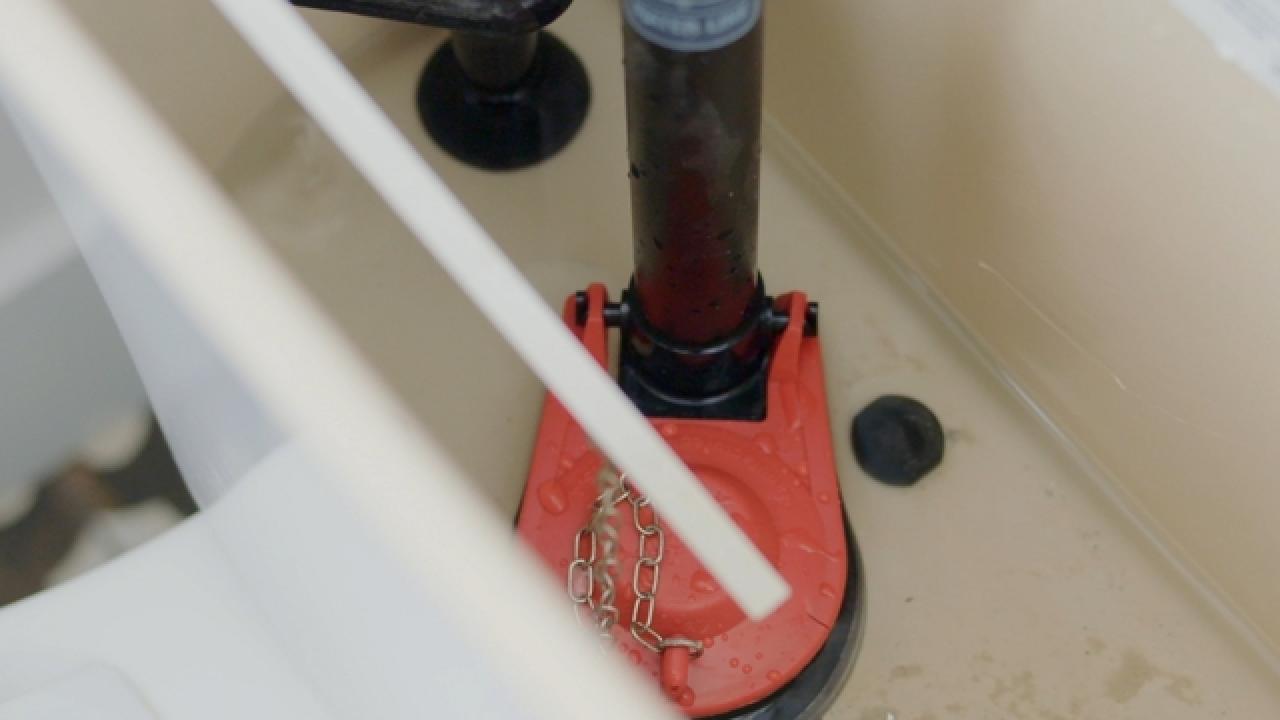My Toilet is Continuing to Sigh
Tips on Solving Common Toilet Problems
Learn how to easily fix common toilet problems such as a toilet that runs intermittently, a toilet that flushes slowly and a clogged toilet.
Jalynn Baker
Does your toilet run intermittently? Stop jiggling the handle and learn how to fix this and other common toilet problems properly.
1: Water Trickling Into the Bowl (Phantom Flushes)
You may periodically hear your toilet begin to spontaneously refill, as though someone had flushed it. A toilet that cuts on and off by itself, or runs intermittently, has a problem that plumbers call a "phantom flush." The cause is a very slow leak from the tank into the bowl. This problem is almost certainly caused by a bad flapper or flapper seat. The solution is to drain the tank and bowl, check and clean the flapper seat and then replace the flapper if it's worn or damaged.
We're sorry, there seems to be an issue playing this video. Please refresh the page or try again in a moment. If you continue to have issues, please contact us here.

2: Water Trickling Into the Tank
If you hear a sustained hissing sound coming from your toilet, check that water isn't running into the overflow tube. Water should rise in the tank to about an inch below the rim of the overflow tube, shown in the diagram above. The float cup could be stuck or in need of adjusting. To adjust the float cup, turn the adjustment screw on the inlet valve assembly (See image below.).
If there are no problems with the float cup, you may need to replace the fill valve assembly. Learn how to do that here.
Here's another potential cause for a toilet that's running constantly: Dirt particles and debris from your home's water line could be clogging the fill valve assembly. You can remove the debris this way:
- Turn the water off to the toilet.
- Remove the cap of the fill valve assembly by lifting the arm from the fill valve assembly to the float cup, and then pressing down while turning the top of the fill valve counterclockwise about a 1/8 turn.
- Place a plastic cup upside down over the top of the fill valve assembly (where you just removed the cap) and slowly turn the water supply to your toilet back on. The resulting flow of water through the top of the fill valve assembly should clear out any debris.
- Turn off the water to your toilet and rinse off the underside of the cap.
- Refit the cap to the locked position by turning it clockwise 1/8 turn, then turn the water to your toilet back on.
3: The Toilet Flushes Slowly
A bowl that empties slowly — also known as a weak flush — is usually the result of clogged holes underneath the rim of the bowl. Use a curved piece of wire to poke gently into each flush hole to clear out any debris. Coat hanger wire works fine, and a small mirror will help you see under the rim. You can also use wire to loosen debris that may be blocking the siphon jet in the bottom of the drain. Be careful not to scratch the bowl.
4: The Dreaded Clog
Clogs are the most common toilet problems. Several tools can help you clear a clogged drain. A double thrust force-cup plunger is more effective than the familiar standard type for clearing minor clogs. Insert the bulb into the drain and then pump forcefully. Slowly release the handle, letting a little water in so you can see whether the drain is clear. Repeat if necessary.
For serious clogs, use a closet auger. Insert the end of the auger into the drain hole and twist the handle as you push the rotor downward. Use caution not to scratch the bowl.
5: Leaky Seals
A standard toilet has at least five seals with the potential for leaking. In each case, the solution is to identify the faulty seal and tighten or replace it. The largest seal is the one between the tank and bowl. A break here will cause a major leak, with water shooting out from underneath the tank at every flush. Replacing this seal involves draining and removing the tank. Turn the tank upside down for better access. Remove the old seal and pop on a new one. The smaller seals at the mounting bolts and the base of the inlet valve assembly may also fail and cause smaller leaks. Replace these in the same way. Tightening the bolts or mounting nut is occasionally enough to stop the leak.
The final seal is the wax seal mounted on a plastic flange underneath the toilet base. If this "Johni Ring" seal fails, water leaking underneath the toilet base will eventually rot the floor. Caulking around the base of the toilet without repairing the leak will only trap the water, making matters worse. To repair a leak around the base of the toilet, you'll need to remove the toilet and replace the wax seal. If the leak is caused by a broken flange, get the help of a professional plumber.
Source: https://www.hgtv.com/how-to/home-improvement/tips-on-solving-common-toilet-problems
0 Response to "My Toilet is Continuing to Sigh"
Post a Comment